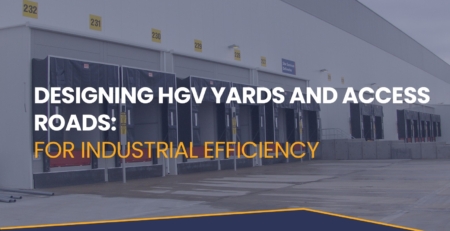Cold Storage at a Crossroads: Key Insights from Paul Waldeck’s Multimodal 2025 Presentation
At this year’s Multimodal 2025, the Cold Chain panel brought together two compelling perspectives on the state of the UK’s temperature-controlled logistics infrastructure. The session featured Paul Waldeck, Technical Director at Ambrey Baker, offering a design and build viewpoint, alongside Tom Southall, Executive Director of the Cold Chain Federation (CCF), who provided valuable policy and strategic insight. Together, they outlined the opportunities and urgent challenges facing the UK’s cold storage sector as it moves towards a more sustainable, efficient future.
This blog focuses on the key design and construction trends shared by Paul Waldeck, including infrastructure ageing, retrofitting strategies, and the commercial realities of new-build versus upgrade.
Here are the key takeaways from his presentation:
1. Construction Market Outlook: Stability Returns with Measured Growth
After a post-pandemic surge in logistics construction, the sector has cooled—but brighter economic prospects are reviving confidence. According to Glenigan data cited by Waldeck, industrial project starts under £100 million are forecast to grow by 5% in 2025 and 8% in 2026. This reflects renewed investor appetite, helped along by easing interest rates and a gradually improving UK economy.
Despite short-term softness, the medium-term trajectory for industrial development—including cold storage—is clearly upward.
2. Five Forces Driving Cold Chain Demand
Sustainability & Net-Zero Goals: Rising regulatory and investor pressure is fuelling demand for low-carbon refrigeration, renewables, and energy-optimised construction.
Expansion of Cold Chain Logistics: E-commerce, globalised food supply chains, and pharmaceutical distribution are boosting the need for high-specification cold storage.
Regulatory Compliance: Tougher standards in food safety, fire protection, and energy use are making advanced technical compliance a design essential.
Technological Innovation: Natural refrigerants like CO₂ and ammonia, low-charge systems, and smarter controls are reshaping the possibilities of cold store performance.
Urbanisation & Infrastructure Spend: From last-mile delivery hubs to national distribution centres, demand is surging in both dense urban environments and major logistics corridors.
Aging Infrastructure: A Ticking Time Bomb
Over 50% of UK cold storage stock is more than 20 years old—and 30% is over 30 years old. These older assets suffer from higher running costs, design limitations, and compliance challenges.
Meanwhile, operational benchmarks tell a stark story:
Some older sites use 2–3× more energy per pallet
52% of facilities fail basic efficiency benchmarks
Many cannot support automation, tall racking, or high-volume throughput
This has left a significant portion of the market facing obsolescence.
What’s Driving Cold Store Obsolescence?
We laid out four primary factors hastening the retirement of legacy cold storage sites:
Regulatory bans on high-GWP refrigerants and tightening MEES/EPC rules
Energy cost pressures, which have doubled in many cases
Corporate ESG goals, with net-zero benchmarks that old stock cannot meet
Market shifts toward mega sites and high-bay automation, beyond the scope of outdated facilities
His conclusion? More than 30% of the UK’s existing cold store capacity is at risk—either facing closure, major retrofit, or demolition.
Retrofit Strategies: Three Pillars of Improvement
For viable older sites, Waldeck proposed a three-part retrofit framework:
1. The Building Envelope:
Improving insulation, sealing air leaks, and fixing damaged panels can drastically improve thermal performance with minimal capital outlay.
2. Systems & Technology:
Replacing compressors, switching to low-GWP refrigerants, and installing Building Management Systems (BMS) and solar PV can reduce energy consumption by 20–30%.
3. Smarter Operations:
Simple operational improvements—from raising set-point temperatures to staff training on door protocols—can significantly cut wastage and extend facility life.
Final Word: Building the Future of Cold Chain Logistics
The Cold Chain session at Multimodal 2025 delivered a rare dual lens—with Paul Waldeck addressing the technical and economic reality of cold store delivery, and Tom Southall from the CCF offering vital strategic and regulatory context. Both underscored the same conclusion: modernising the UK’s cold storage capacity is essential, not optional.
Whether through smart retrofits or ambitious new developments, the next five years will define the cold chain’s readiness for a low-carbon, high-efficiency future.











